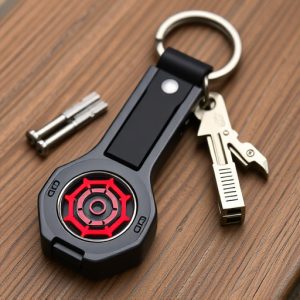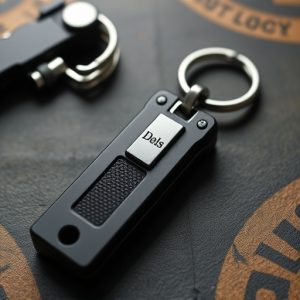Mastering Legal Defensive Keychain Weapon Techniques: A State-by-State Guide
Carrying a tactical keychain weapon for self-defense in the US requires understanding state-specific…….
Carrying a tactical keychain weapon for self-defense in the US requires understanding state-specific laws regarding knife length, blade type, and carry permissions. Staying informed ensures compliance and peace of mind. Safe handling involves proper storage, regular maintenance, muscle memory training, de-escalation techniques, and professional instruction. Responsible use includes deployment mechanics, strategic thinking, situational awareness, safe storage, transport, control, and considering non-lethal options. Regular practice sessions enhance quick, accurate decision-making in simulated real-world scenarios.
“Uncover the essential guidelines governing defensive keychain legal carry in a rapidly changing world. This comprehensive guide explores state-by-state regulations on tactical keychain weapons, ensuring armed citizens stay within legal boundaries. From understanding key laws and safe handling practices to exploring training methods and best practices for tactical keychain weapon techniques, this article equips readers with vital knowledge for responsible self-defense.”
- Understanding State Laws on Defensive Keychain Weapons
- Legal Considerations and Safe Handling Techniques
- Tactical Keychain Weapon Training and Best Practices
Understanding State Laws on Defensive Keychain Weapons
In the United States, the legal landscape surrounding defensive keychain weapons varies significantly from state to state. Understanding these laws is crucial for anyone considering carrying a tactical keychain weapon as a means of self-defense. Each state has its own set of regulations and restrictions on the type of personal defense tools allowed, with some states permitting certain tactical keychain weapons while others severely restrict or ban them entirely.
When exploring defensive keychain legal carry guidelines, individuals should focus on tactical keychain weapon techniques that fall within their state’s legal framework. This involves researching specific laws pertaining to knife length, blade type, and overall design, as well as any requirements for carrying permits or hidden carry allowances. Staying informed about these legal nuances ensures compliance and peace of mind when relying on a tactical keychain weapon for personal safety.
Legal Considerations and Safe Handling Techniques
When it comes to legal considerations regarding defensive keychains, understanding your rights and responsibilities is paramount. Many states in the US have specific laws governing the carry of self-defense tools, including keychains designed for tactical use. It’s crucial to stay informed about these regulations, as they can vary widely from one jurisdiction to another. For instance, some states allow open carry with minimal restrictions, while others mandate concealed carry permits. Additionally, there might be rules around what types of weapons are permissible and where they can be carried. Always check your local laws before equipping yourself with a tactical keychain weapon.
Safe handling techniques are an integral part of responsible self-defense practice. Defensive keychains, despite their compact size, should be treated with the same care as any other weapon. This includes proper storage, ensuring the device is in good working order, and familiarizing yourself with its mechanics. Regular training and practice can help you develop muscle memory for deploying the keychain swiftly and effectively when needed. Moreover, understanding de-escalation techniques and seeking professional instruction can significantly enhance your overall safety and confidence while carrying a tactical keychain weapon.
Tactical Keychain Weapon Training and Best Practices
Carrying a tactical keychain weapon, while offering enhanced personal security, comes with responsibilities that demand proper training and adherence to best practices. Mastering Tactical Keychain Weapon Techniques involves understanding not just the physical mechanics of deployment but also strategic thinking and situational awareness. Users must learn safe handling procedures, including secure storage and transport, to prevent accidental activation or misuse.
Best practices emphasize control and de-escalation. It’s crucial to train in controlled environments, simulating real-world scenarios for effective response. Practicing with diverse materials and situations ensures versatility. Always prioritize safety by remaining calm, assessing the environment, and considering non-lethal options before deploying any weapon. Regular practice sessions reinforce muscle memory, ensuring quick and accurate decision-making during critical moments.
In conclusion, understanding and adhering to defensive keychain legal carry guidelines is paramount for responsible citizens aiming to enhance personal safety. By grasping state laws, safe handling techniques, and tactical training, individuals can maximize the benefits of these compact self-defense tools while ensuring compliance with legal requirements. Embracing best practices for tactical keychain weapon techniques fosters a culture of preparedness without compromising safety or legality.


